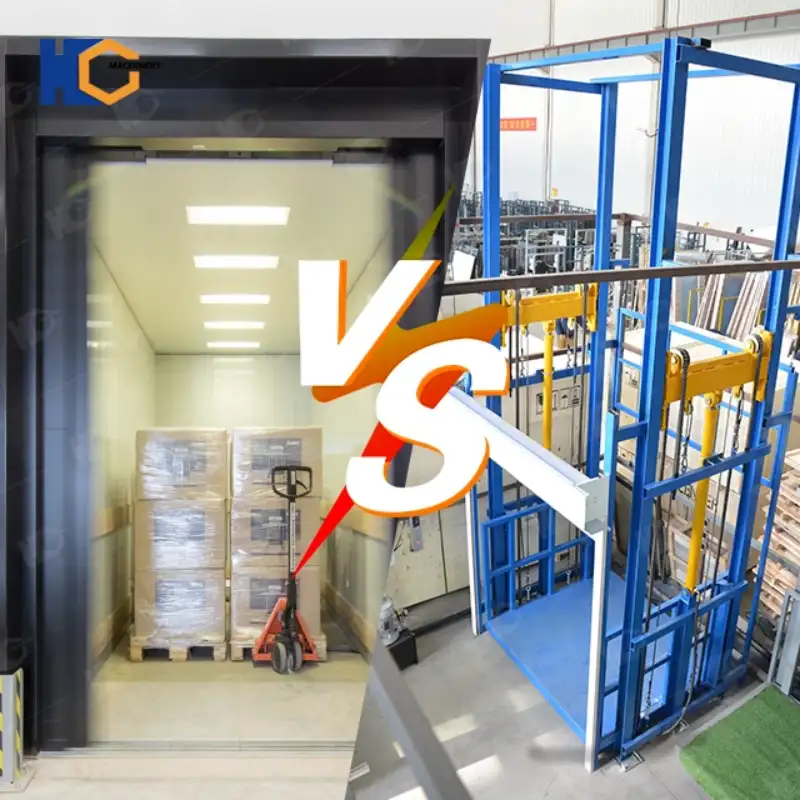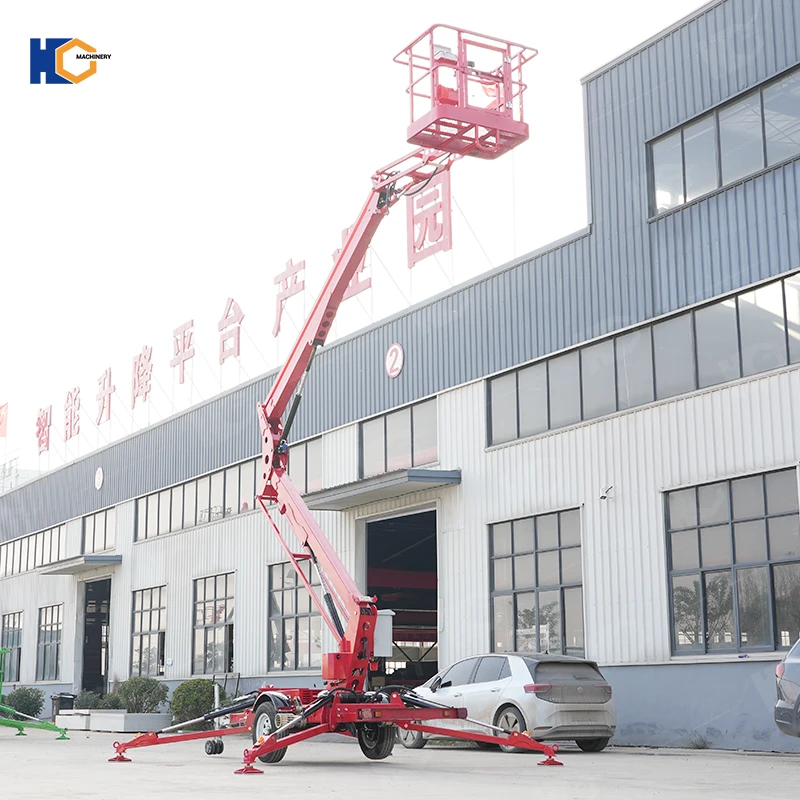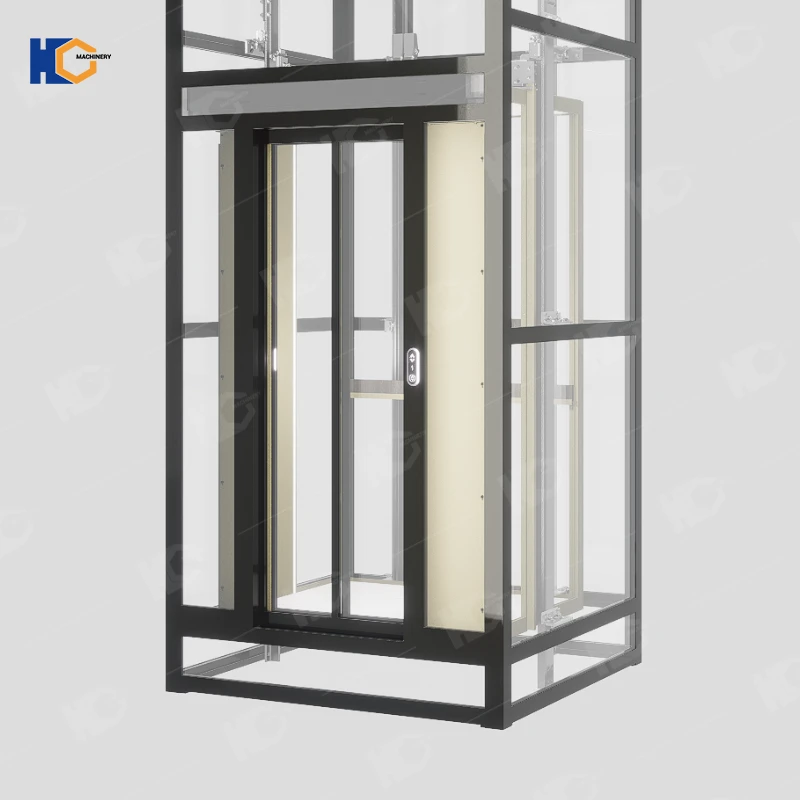In today's fast-paced logistics and warehousing industry, efficiency and reliability are paramount. Warehouse cargo lifts play a crucial role in streamlining operations, enabling the safe and efficient movement of heavy goods between different levels of a facility. These lifts are indispensable in distribution centers, manufacturing plants, and large-scale storage facilities, where they help reduce manual labor, minimize workplace injuries, and optimize workflow.
When it comes to warehouse cargo lifts, two primary types dominate the market: hydraulic and electric. Hydraulic lifts, powered by fluid pressure, are known for their robustness and ability to handle extremely heavy loads. They are often the go-to choice for industrial environments where durability is a top priority. On the other hand, electric lifts, driven by motors and often equipped with advanced battery or direct power systems, offer faster operation, smoother performance, and greater energy efficiency. These lifts are increasingly popular in modern warehouses that prioritize speed, precision, and sustainability.
But which type is better for your business? The answer depends on several factors, including your specific operational needs, budget, and long-term maintenance considerations. Are you handling massive loads that require sheer power, or do you need a lift that can keep up with rapid, repetitive tasks? Is upfront cost your main concern, or are you looking for a solution that will save you money on energy and maintenance over time?
In this article, we’ll dive deep into the pros and cons of hydraulic and electric warehouse cargo lifts, comparing their performance, costs, and ideal use cases. By the end, you’ll have a clear understanding of which lift type aligns best with your business goals—helping you make an informed decision that boosts productivity and efficiency in your warehouse.
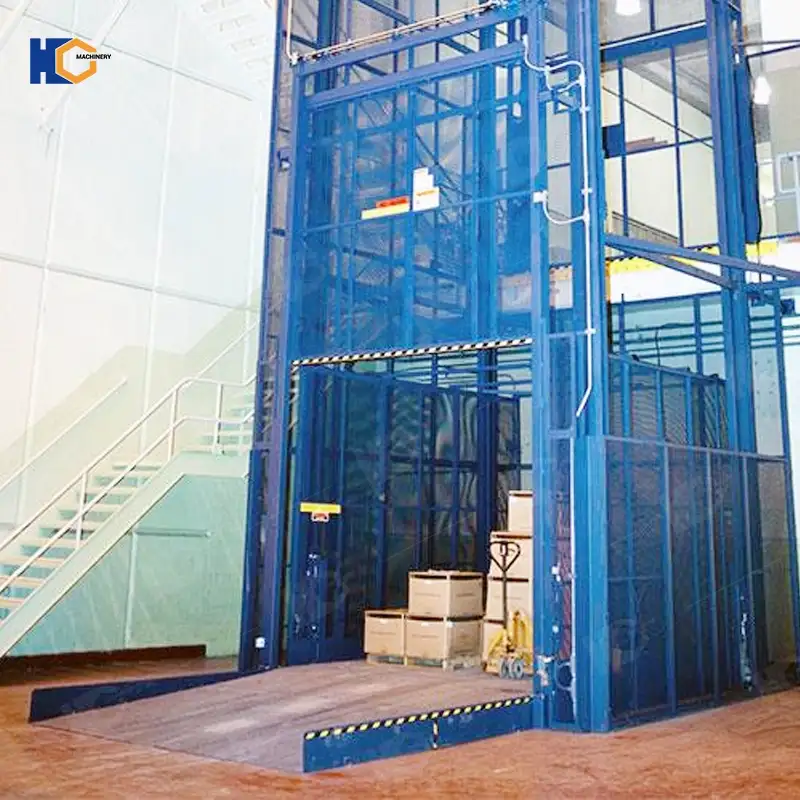
How Hydraulic Cargo Lifts Work: The Powerhouse of Material Handling
The Fundamental Mechanics of Hydraulic Lifting Systems
At the core of every hydraulic warehouse cargo lift is a remarkably simple yet powerful principle: Pascal's Law of fluid pressure. These systems operate by using an incompressible hydraulic fluid (typically oil) that's pressurized by a pump to create lifting force. When the pump activates, it pushes the fluid into a hydraulic cylinder, causing the piston inside to extend and raise the lift platform. This direct transfer of energy through fluid pressure allows hydraulic lifts to generate tremendous lifting force from relatively compact components.
The system comprises several key elements:
Hydraulic pump (the heart of the system, creating fluid pressure)
Hydraulic fluid reservoir (stores and filters the operating fluid)
Control valves (regulate the direction and pressure of fluid flow)
Hydraulic cylinders (convert fluid pressure into linear motion)
Load-bearing platform (the surface that carries materials)
What makes this system particularly valuable for industrial applications is its ability to multiply force. A small pump can generate enough pressure to lift several tons of weight, making hydraulic systems incredibly space-efficient while delivering exceptional power.
Industrial Applications Where Hydraulic Lifts Excel
Hydraulic cargo lifts have become the backbone of numerous industries that deal with heavy or bulky materials:
Manufacturing Plants: For moving heavy machinery parts, raw materials, and finished products between production floors.
Construction Material Warehouses: Handling pallets of bricks, bags of cement, or steel beams that often weigh several tons.
Automotive and Aerospace Facilities: Transporting engines, vehicle chassis, or aircraft components that require precise, heavy-duty lifting.
Shipping and Freight Terminals: Loading/unloading heavy cargo containers and oversized shipments.
Cold Storage Facilities: Operating reliably in low-temperature environments where other systems might fail.
These lifts particularly shine in rugged environments where equipment faces constant heavy use, exposure to dust, moisture, or temperature extremes. Their simple mechanical design with fewer electrical components makes them less vulnerable to environmental challenges.
The Compelling Advantages of Hydraulic Cargo Lifts
Unmatched Lifting Capacity
Hydraulic systems reign supreme when it comes to raw lifting power. While typical electric lifts might handle 2,000-5,000 kg, hydraulic lifts commonly manage 10,000-50,000 kg loads, with some industrial models capable of 100,000 kg or more. This makes them the only viable option for certain heavy industries. The force multiplication principle allows hydraulic systems to achieve this without requiring enormous motors or complex gearing systems.
Exceptional Durability in Demanding Conditions
The rugged construction of hydraulic lifts gives them several durability advantages:
Fewer sensitive electronic components that could fail in harsh environments
Mechanical systems that withstand vibration, dust, and moisture better than electrical systems
Ability to operate in extreme temperatures (both high and low) that might affect electric systems
Longer lifespan when properly maintained, often exceeding 20 years of service
This durability translates to lower replacement costs and more consistent performance in challenging industrial settings.
Cost Advantages at Purchase
For businesses with budget constraints, hydraulic lifts often present a compelling financial case:
Lower initial purchase price: Typically 15-30% less expensive than comparable electric models
Simpler technology: Reduced engineering and manufacturing costs
Easier installation: Often requiring less specialized electrical work
Proven design: Established technology with widely available replacement parts
This makes hydraulic lifts particularly attractive for businesses that need heavy-duty capability without premium pricing.
The Limitations of Hydraulic Lift Systems
Slower Operational Speed
The very mechanism that gives hydraulic lifts their power also limits their speed. While electric lifts can achieve lifting speeds of 0.3-0.5 meters per second, hydraulic systems typically operate at 0.1-0.3 m/s. This speed differential becomes significant in operations requiring frequent lifts throughout the workday. The slower speed results from:
The time needed to build hydraulic pressure
Fluid flow rate limitations
The need for careful control when moving heavy loads
This makes hydraulic lifts less ideal for time-sensitive operations where rapid movement of materials is critical.
Ongoing Hydraulic Fluid Maintenance
Maintaining the hydraulic system requires regular attention that electric lifts don't need:
Fluid changes: Typically every 1-2 years or 2,000 operating hours
Filter replacements: Necessary to keep the system clean
Fluid level checks: Regular monitoring to prevent air from entering the system
Contamination prevention: Keeping water and particles out of the hydraulic fluid
Neglecting fluid maintenance can lead to reduced performance, increased wear, and potentially costly system failures.
Potential for Fluid Leaks
Even well-maintained hydraulic systems can develop leaks over time due to:
Seal degradation from constant pressure and movement
Hose wear from vibration and flexing
Fitting loosening due to pressure fluctuations
These leaks create several problems:
Environmental concerns: Hydraulic fluid spills can violate regulations
Safety hazards: Slippery surfaces increase accident risks
Performance issues: Low fluid levels reduce lifting capacity
Cleanup costs: Spill containment and remediation expenses
Modern designs have reduced but not eliminated these leakage risks, making them an ongoing consideration for facility managers.
Making the Hydraulic Choice
Hydraulic cargo lifts represent a time-tested solution for heavy material handling. Their brute strength and durability make them indispensable in many industrial settings, while their relatively simple technology keeps costs manageable. However, businesses must weigh these benefits against the slower operation and maintenance requirements. For operations prioritizing sheer lifting power over speed, particularly in challenging environments, hydraulic systems often prove to be the optimal choice. The decision ultimately depends on matching the lift's capabilities to the specific demands of your material handling operations.
How Electric Cargo Lifts Work: The Future of Efficient Material Handling
The Advanced Technology Behind Electric Lifting Systems
Electric warehouse cargo lifts represent the cutting edge of vertical transportation technology, utilizing electric motors as their primary power source. These sophisticated systems operate through a combination of electromechanical components that convert electrical energy into precise vertical motion. The core mechanism typically involves:
High-torque electric motors (AC or DC) that drive the lifting mechanism
Geared traction systems or screw drives that translate rotational force into vertical movement
Advanced control systems with variable frequency drives (VFDs) for smooth acceleration and deceleration
Power options including direct wired connections or high-capacity battery packs
Safety mechanisms such as electromagnetic brakes and overload sensors
Modern electric lifts often incorporate smart technologies like IoT connectivity for performance monitoring and predictive maintenance. The motor-driven operation provides exceptional control over speed and positioning, making these lifts ideal for applications requiring precision. Unlike their hydraulic counterparts, electric systems eliminate the need for fluid power transmission, resulting in cleaner, more responsive operation.
Ideal Applications for Electric Cargo Lifts
Electric cargo lifts have become the preferred solution in numerous industries where speed, precision, and efficiency are paramount:
E-commerce Fulfillment Centers: Handling rapid, repetitive movements of packaged goods in high-volume distribution environments
Pharmaceutical Warehouses: Transporting sensitive medical supplies that require smooth, vibration-free movement
Food and Beverage Facilities: Meeting strict hygiene standards with clean, leak-free operation
Retail Distribution Centers: Supporting just-in-time inventory systems with fast, reliable vertical transportation
Automated Storage and Retrieval Systems (AS/RS): Integrating seamlessly with robotic material handling equipment
These lifts excel in environments where operations run continuously throughout shifts, requiring consistent performance without degradation in speed or precision. Their cleaner operation makes them particularly valuable in facilities with strict cleanliness requirements or those pursuing green certifications.
Significant Advantages of Electric Cargo Lifts
Superior Speed and Operational Smoothness
Electric lifts outperform hydraulic systems in several key operational aspects:
Faster cycle times: Typical lifting speeds of 0.3-0.5 m/s compared to hydraulic's 0.1-0.3 m/s
Precise positioning: Ability to stop within millimeters of target locations
Smoother acceleration/deceleration: Eliminates the jerky movements sometimes associated with hydraulic systems
Quieter operation: Reduced noise pollution in the work environment
This combination of speed and precision can significantly increase throughput in busy logistics operations, often justifying the higher initial investment through productivity gains.
Outstanding Energy Efficiency
Electric lifts incorporate several features that minimize energy consumption:
Regenerative braking systems that recover energy during descent
High-efficiency motors that convert over 90% of electrical input to mechanical energy
Smart power management that reduces consumption during idle periods
LED lighting and other efficiency features in modern designs
These efficiencies are particularly noticeable in facilities with frequent lift cycles, where the energy savings can amount to 30-50% compared to hydraulic alternatives over time. Many electric models qualify for energy efficiency rebates and contribute to sustainability initiatives.
Reduced Long-Term Maintenance Requirements
The maintenance profile of electric lifts offers several advantages:
No hydraulic fluids to monitor, change, or dispose of
Fewer wear items compared to hydraulic systems' pumps and seals
Simpler maintenance routines primarily focused on mechanical components
Predictive maintenance capabilities through integrated monitoring systems
Maintenance costs for electric lifts are typically 40-60% lower than hydraulic systems over a 10-year period, with the added benefit of avoiding hydraulic fluid cleanup and disposal concerns.
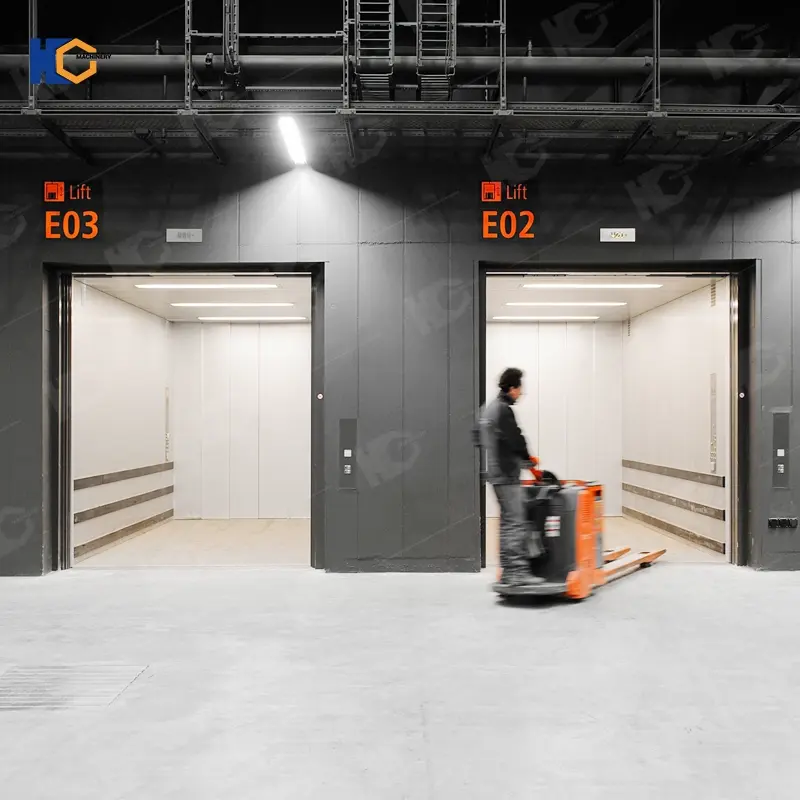
Considerations When Choosing Electric Lifts
Higher Initial Investment
The advanced technology in electric lifts comes at a price premium:
Purchase prices typically 20-40% higher than comparable hydraulic models
Installation costs may be greater due to electrical infrastructure requirements
Battery systems (if used) represent an additional cost component
However, total cost of ownership analyses often show electric systems becoming cost-competitive within 3-5 years due to energy and maintenance savings.
Load Capacity Limitations
While continually improving, electric lifts face inherent limitations:
Maximum capacities generally cap at 5,000-10,000 kg for most models
Physical size constraints of electric motors and drive systems
Heat dissipation challenges at very high loads
For applications requiring movement of extremely heavy loads (15,000 kg+), hydraulic systems remain the only practical option.
Battery Considerations for Mobile Units
Battery-powered electric lifts introduce several operational factors:
Charging requirements that may necessitate downtime or battery swapping
Gradual capacity reduction over the battery's lifespan (typically 3-5 years)
Temperature sensitivity affecting performance in extreme conditions
Replacement costs that must be factored into long-term budgeting
Hardwired models eliminate these concerns but sacrifice mobility and flexibility in some applications.
The Electric Advantage
Electric cargo lifts represent the future of material handling technology, offering unparalleled efficiency, precision, and cleanliness. Their superior performance in high-throughput environments makes them increasingly popular despite higher upfront costs. For operations prioritizing speed, precision, and long-term operating economics—particularly in clean or temperature-controlled environments—electric lifts typically deliver the best value. The decision between electric and hydraulic ultimately depends on carefully evaluating your specific load requirements, operational tempo, and facility characteristics against each technology's strengths and limitations.
Key Comparison Factors: Hydraulic vs. Electric Cargo Lifts
Load Capacity: Power vs. Practicality
When evaluating lifting capability, hydraulic systems demonstrate clear superiority for extreme weights. Industrial-grade hydraulic lifts routinely handle 10,000-50,000 kg loads, with specialized models exceeding 100,000 kg capacity. This immense strength comes from their fundamental operating principle—Pascal's Law allows small pumps to generate tremendous force through fluid pressure.
Electric lifts, while continually improving, typically max out at 2,000-10,000 kg for standard models. The limitation stems from physical constraints of electric motors and drive mechanisms. However, for the majority of warehouse applications falling within this range, electric lifts offer compelling advantages in other areas that often outweigh pure capacity considerations.
Speed & Operational Efficiency
Electric lifts dominate in terms of speed and workflow efficiency:
Lifting velocity: 0.3-0.5 m/s (electric) vs. 0.1-0.3 m/s (hydraulic)
Cycle times: Up to 50% faster for typical warehouse operations
Precision positioning: Electric systems can stop within ±5mm vs. hydraulic's ±10-15mm
Responsiveness: Immediate start/stop without pressure buildup delays
This performance differential becomes particularly significant in high-throughput environments like e-commerce fulfillment centers, where electric lifts can complete 20-30% more lifts per shift. The smooth, consistent operation also reduces product damage risks during transport.
Maintenance Requirements & System Longevity
Maintenance profiles reveal stark contrasts between the technologies:
| Factor | Hydraulic Lifts | Electric Lifts |
|---|---|---|
| Fluid Maintenance | Quarterly checks, annual changes | None required |
| Component Wear | Seals, hoses, pumps | Mainly mechanical parts |
| System Monitoring | Manual inspections | Often IoT-enabled |
| Typical Lifespan | 15-20 years | 20-25 years |
Electric systems eliminate hydraulic fluid concerns—no leaks, no contamination risks, and no special disposal requirements. Their digital monitoring capabilities also enable predictive maintenance, further reducing unexpected downtime.
Energy Consumption & Operating Costs
Long-term energy use favors electric technology:
Energy recovery: Regenerative braking can reclaim 15-25% of descent energy
Efficiency ratings: Electric motors achieve 90%+ efficiency vs. hydraulic's 60-70%
Idle consumption: Electric lifts use minimal power when stationary
Heat generation: Hydraulic systems waste energy as heat (10-15% of input)
In continuous operation scenarios, electric lifts typically demonstrate 30-50% lower energy costs annually. These savings often offset their higher purchase price within 3-5 years.
Noise Levels & Work Environment
Electric lifts create noticeably better working conditions:
Operational noise: 60-65 dB (electric) vs. 70-80 dB (hydraulic)
Vibration levels: Minimal with electric vs. perceptible with hydraulic
Cleanliness: No oil mist or potential leaks
This makes electric models preferable for:
✔ Indoor facilities with noise restrictions
✔ Environments requiring clean operations (food/pharma)
✔ Offices adjacent to warehouse spaces
Cost Analysis: Short-Term vs. Long-Term
The financial comparison reveals nuanced tradeoffs:
Upfront Costs:
Hydraulic lifts typically cost 15-30% less to purchase and install
Electric systems may require upgraded electrical infrastructure
10-Year Total Cost:
Hydraulic: Higher fluid, filter, and component replacement costs
Electric: Lower maintenance but potential battery replacements
Return on Investment:
Hydraulic: Better for intermittent heavy lifting
Electric: Superior for high-cycle operations (payback in 3-5 years)
For businesses with 5,000+ annual lift cycles, electric models usually deliver better lifetime value despite higher initial investment. Infrequent users may find hydraulic systems more cost-effective.
Making the Optimal Choice
The ideal selection depends on carefully weighting these factors against your specific operational requirements. While hydraulic lifts remain indispensable for extreme heavy lifting, electric technology increasingly represents the smarter choice for most modern warehouse applications—particularly those valuing speed, precision, and long-term operating economics. The decision ultimately hinges on aligning the lift's capabilities with your workflow patterns, budget parameters, and facility characteristics.
Choosing Between Hydraulic and Electric Cargo Lifts: Your Ideal Match
For heavy-duty industrial applications involving extreme weights (10,000+ kg) or rugged environments, hydraulic lifts remain the undisputed champion. Their brute strength and durability outperform electric models when moving massive machinery, construction materials, or industrial equipment across multiple levels.
Operations requiring fast, frequent, and precise lifting should prioritize electric cargo lifts. Their superior speed (0.3-0.5 m/s), smooth operation, and precision positioning make them ideal for e-commerce fulfillment centers, pharmaceutical warehouses, and food processing facilities where throughput and cleanliness are critical.
Budget-conscious buyers face a nuanced decision:
Short-term savings: Hydraulic lifts offer 15-30% lower upfront costs
Long-term value: Electric lifts typically prove cheaper over 5+ years due to energy savings (30-50% less) and reduced maintenance (40-60% lower costs)
For eco-conscious operations, electric lifts—particularly solar-powered or regenerative braking models—deliver clear sustainability advantages. They eliminate hydraulic fluid pollution risks, reduce energy consumption, and often qualify for green building certifications. Battery-powered electric models also enable off-grid operation in sustainable facilities.
Recommendation:
Choose hydraulic for extreme weights, outdoor use, or intermittent heavy lifting
Select electric for high-speed operations, clean environments, or when prioritizing long-term ROI
Consider hybrid solutions for facilities needing both heavy lifting and precision handling
The optimal choice ultimately depends on your specific load requirements, operational tempo, and sustainability goals—with each technology excelling in different scenarios.
Future Trends & Alternatives in Cargo Lift Technology
The warehouse cargo lift industry is undergoing a technological revolution, with three key developments reshaping material handling:
1. Hybrid Hydraulic-Electric Systems
Emerging hybrid models combine the best of both technologies:
Electric motors for precision movement and energy efficiency
Hydraulic assistance for peak load demands
Intelligent systems that automatically switch between power sources
These systems are particularly valuable for operations with variable load requirements, offering the strength of hydraulics when needed while maintaining electric efficiency for routine lifts.
2. IoT-Enabled Smart Lifts
Modern electric lifts increasingly incorporate:
Real-time performance monitoring sensors
Predictive maintenance algorithms (reducing downtime by 30-40%)
Cloud-connected diagnostics for remote troubleshooting
Usage analytics for optimizing warehouse workflows
These smart features are becoming standard in premium electric models, with hydraulic systems now adopting basic IoT capabilities as well.
3. Advanced Automation Integration
The next generation of cargo lifts features seamless integration with:
Autonomous Mobile Robots (AMRs) for hands-free loading/unloading
Robotic arms for precision package handling
Warehouse Management System (WMS) connectivity for automated inventory tracking
AI-powered routing optimization that coordinates multiple lifts
These innovations are transforming cargo lifts from standalone equipment into intelligent nodes within fully automated material handling ecosystems. As warehouses embrace Industry 4.0, we can expect even tighter integration between lifting systems, robotics, and data analytics platforms.
The future points toward increasingly intelligent, connected, and adaptable lifting solutions that blend the strengths of both hydraulic and electric technologies while introducing new automation capabilities.
Conclusion: Making the Right Cargo Lift Decision
The choice between hydraulic and electric warehouse cargo lifts ultimately comes down to your specific operational needs. Hydraulic systems remain the powerhouse solution for extreme heavy lifting (10,000+ kg) and rugged environments, offering unmatched durability for industrial applications. Electric lifts dominate in speed (0.3-0.5 m/s), precision, and energy efficiency, making them ideal for high-throughput warehouses prioritizing productivity and sustainability.
Our Final Recommendation:
Select hydraulic lifts if you regularly handle massive loads or operate in harsh conditions
Choose electric lifts for fast-cycle operations, clean environments, or when long-term operating costs matter most
Consider hybrid models if your needs vary between heavy lifting and precision handling
Remember that the right solution should align with both your immediate requirements and long-term business goals. The higher upfront cost of electric models often pays off through energy savings and reduced maintenance within 3-5 years, while hydraulic systems offer lower initial investment for heavy-duty applications.
Still unsure which cargo lift best fits your operation? Contact us today for a personalized recommendation tailored to your warehouse's unique requirements, budget, and growth plans. Let us help you optimize your vertical transportation for maximum efficiency and ROI.
